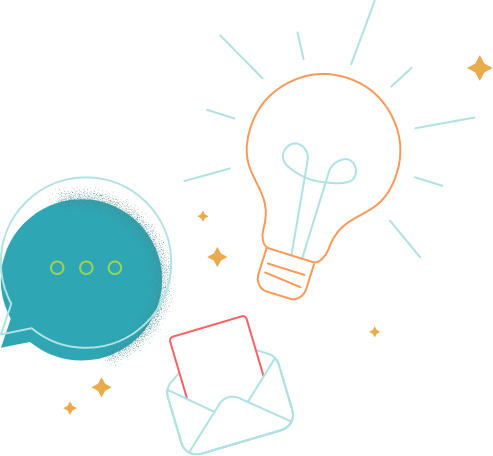ChatGPT has app functionality now. On October 6, 2025 OpenAI announced a host of new apps that “you can chat with, right inside ChatGPT.”
Users can interact with a selection of their favorite apps — like Booking.com, Spotify, Zillow, Canva, Figma and more — all without leaving the chat window. This update mostly has implications for everyday users and developers, which is who it was designed for (dedicated apps for ChatGPT business are said to be coming later this year). But there are some initial app integrations that marketers may find useful, too.
In this post, we’ll break down what’s new and what marketers should consider before making ChatGPT their full-time AI assistant — and why other options may still be a stronger choice.
ChatGPT Becomes an App Platform
In October 2025, OpenAI announced that ChatGPT can now host and run third-party apps directly inside the chat interface. This means you can interact with tools like Canva, Figma, Expedia, Zillow, Spotify and more without switching tabs or juggling logins.
Developers can also now build apps that plug directly into ChatGPT, letting users complete actions, pull data or design assets in a single conversational flow.
The rollout covers both free and paid ChatGPT tiers (outside the EU for now) and is a pretty major step in OpenAI’s direction of positioning ChatGPT as more than just a chatbot.
What This Means for Everyday Users
For the average user, apps in ChatGPT are a convenience upgrade for those who find themselves using the chatbot and one or more of its inaugural pilot applications. Instead of bouncing between tabs to search and book flights and create the perfect airplane playlist, for example, you can do everything inside one assistant.
Want to:
- Book a hotel? Ask ChatGPT to check Expedia.
- Find a new home? It can browse Zillow.
- Learn a new skill? Launch Coursera in chat.
- Create an infographic? Open Canva or Figma right inside the window.
If any of that sounds interesting to you, you should definitely give it a try.
But what about ChatGPT for marketers? Canva and Figma are common tools in the industry, but are these app integrations enough of an upgrade to convince marketers to adopt ChatGPT as their full-time AI assistant?
Subscribe to the ai marketer
Weekly updates on all things ai in marketing.
Should ChatGPT Be Your Full-Time Marketing AI Writer? 3 Important Considerations
This new app functionality is certainly cool, new and shiny and will no doubt be a welcome surprise to some marketers. That said, I’m not sure it’s enough for most to make it their primary content engine.
Before you make any AI decision, it’s important to contextualize your needs and weigh ROI, risk and readiness across several dimensions.
Here are three considerations that stand out:
1. Quality and Consistency
Even with these new and forthcoming business app integrations, can ChatGPT consistently deliver content that matches your brand tone, reads like you, is factually sound and could be considered ‘good’ without stringent and endless prompt tweaking? For many teams, the answer is often still “No.” 56% of marketers still have concerns about AI content quality and accuracy with today’s most popular tools.
This is something a few of Brafton’s own learned recently at the 2025 Technology for Marketing Expo in London, chatting with others in the space. Tons of marketers are still searching for an ideal AI tool that can create on-brand content at scale, because many current options lack the dedicated features and functionality they’re looking for that enable that.
2. Workflow Integration
With the new apps update, ChatGPT can now — theoretically — streamline parts of your production pipeline all in one place. Marketers should take caution, though, and be critical of whether current popular tools actually speed things up or are just shifting workload elsewhere.
A whopping 93% of marketers say that their chosen marketing tools added new AI features last year. And while that doesn’t directly indicate overwhelm, it signals an environment of near constant change that can be difficult for markets to keep up with.
3. Brand Control and Differentiation
One known risk of AI writing — especially with today’s most used tools — is homogenization. If everyone uses ChatGPT and doesn’t take the time to complete proper editing passes and quality checks, content across brands can start sounding eerily similar. Further to that point, there are no dedicated brand or content brief options for ChatGPT, which makes creating consistent on-brand collateral both a heavier lift and a gamble.
What Marketers Should Look for When Choosing an AI Writing Assistant
If ChatGPT isn’t your all-in-one solution — or if you’re exploring alternatives — it helps to know what actually matters when evaluating AI writing tools beyond the newest and flashiest updates. The goal isn’t to chase cool features, but to find a platform that can reliably maintain brand integrity to help you achieve your marketing goals.
Here are a few key capabilities to look for:
1. Brand Voice Customization
Look for tools that let you train or fine-tune tone, voice and style, or even directly upload your brand guidelines. A good AI writer should sound like you, not like everyone else. Bonus points for assistants that let you store multiple brand personas for easy tone switching between projects.
2. Integrated Fact-Checking and Source Control
A marketer’s credibility lives or dies by factual accuracy. Choose a system that offers live web referencing and citation or allows you to connect your own company data, content library or CMS.
AI that can “ground” its responses in real sources and in content your brand has already produced can reduce hallucination risk.
3. Collaboration and Workflow Tools
The best assistants don’t just write or come with all the bells and whistles — they fit nicely into your team’s content pipeline.
Features like approval flows, multi-user access and collaborative SME workflows are essential for marketing teams where content must touch multiple stakeholders before publishing — whether for QA or to draw unique insights from your very own SMEs for higher authority.
4. SEO and Optimization Integrations
Producing good copy is one thing, but tools that help you get the most out of your content should offer built-in SEO scoring, keyword optimization, E-E-A-T analysis and meta tag generation, to name a few. The more you can do under one roof, the easier it will be to scale confidently, quickly.
Final Thoughts
OpenAI’s new apps update alludes to an increasingly blurring line between creative tools and AI assistants.
The future of algorithmic assistants will likely be more fully-featured bots that can do almost anything in one window — including keeping everyday users and professionals in the engine longer. I don’t doubt that for many, there is some value to unlock with these new integrations. But marketers, be critical: What do you truly need out of your AI writing tools, and what’s just distracting auxiliary noise?






